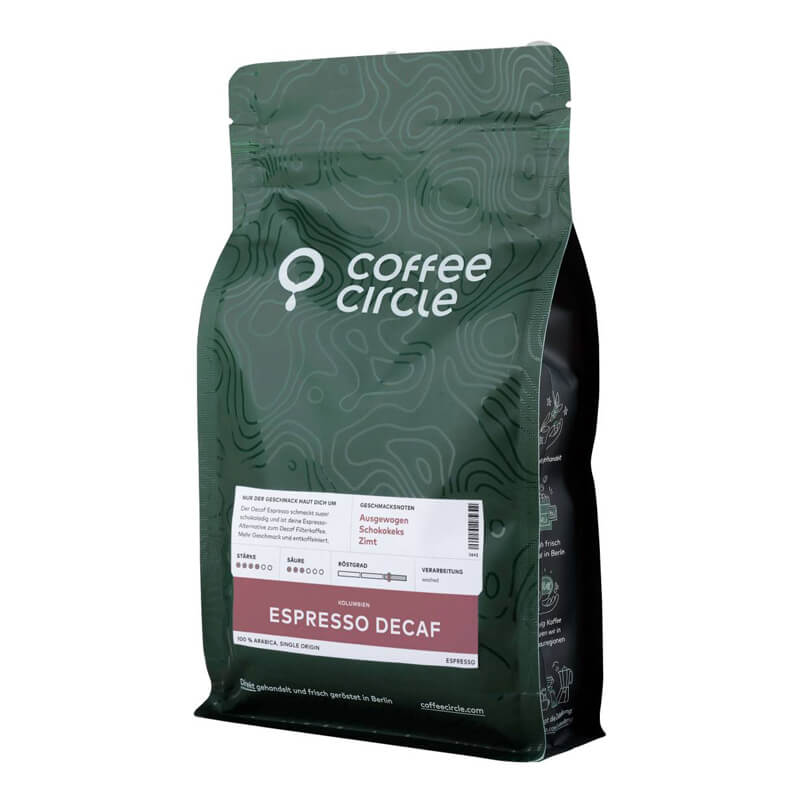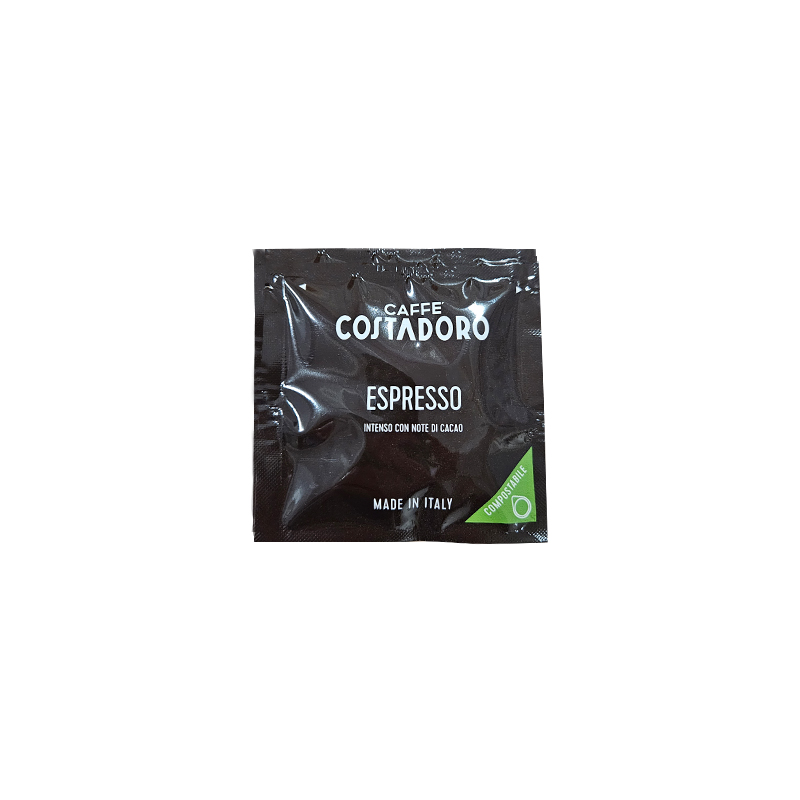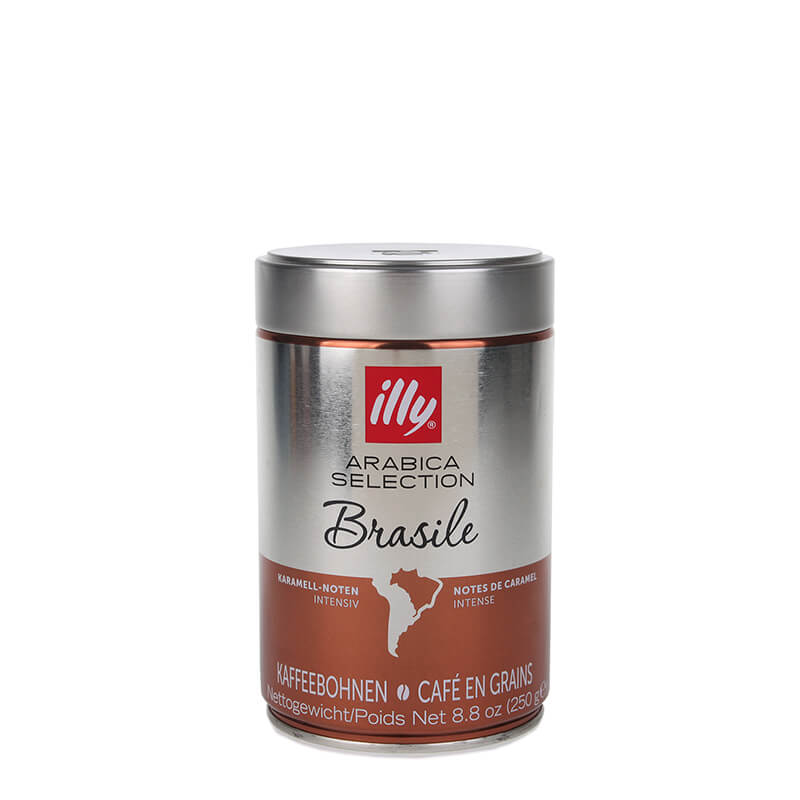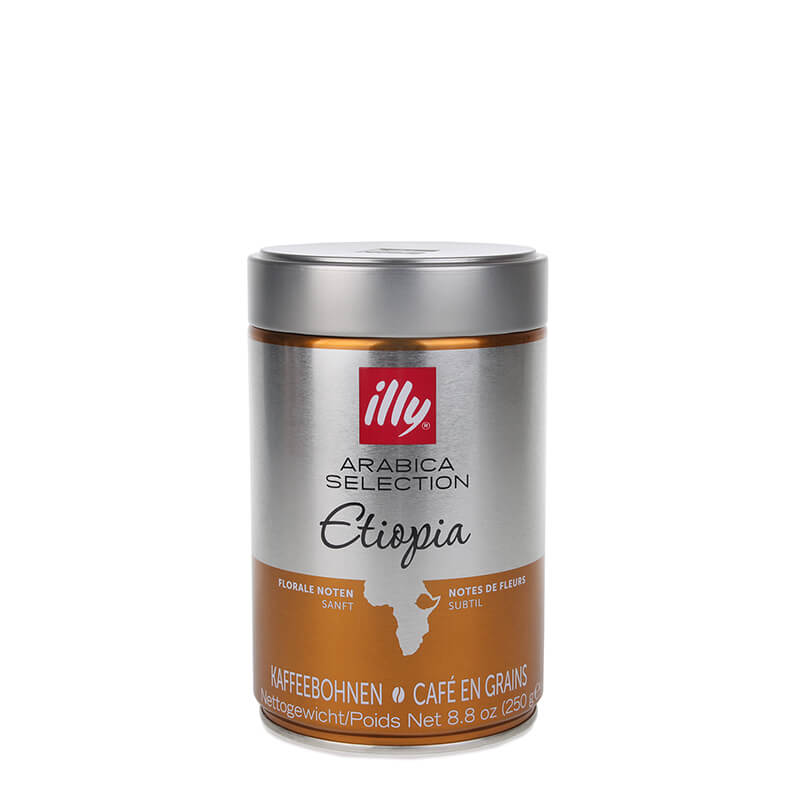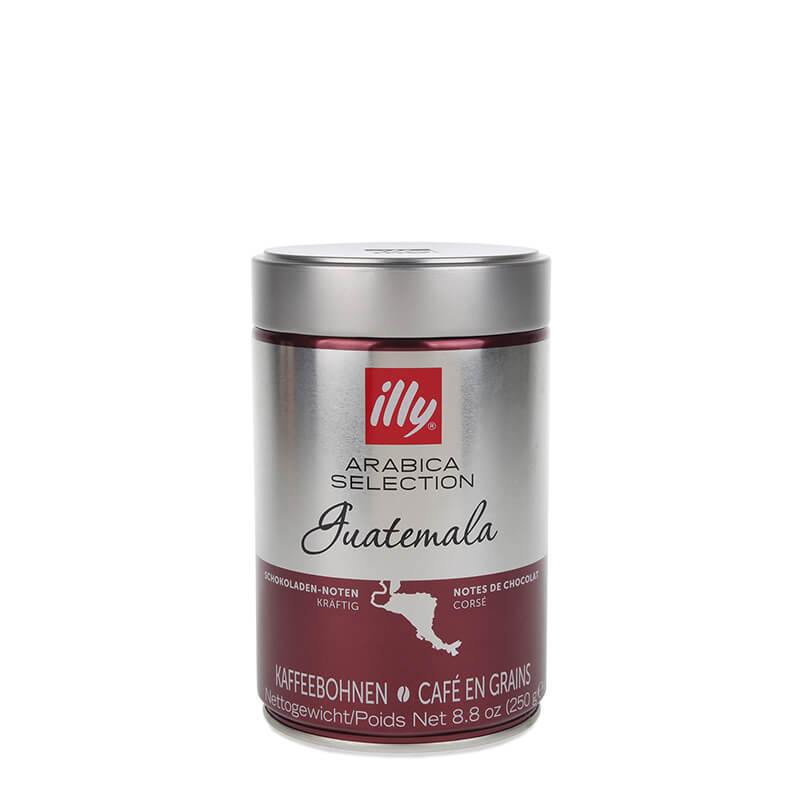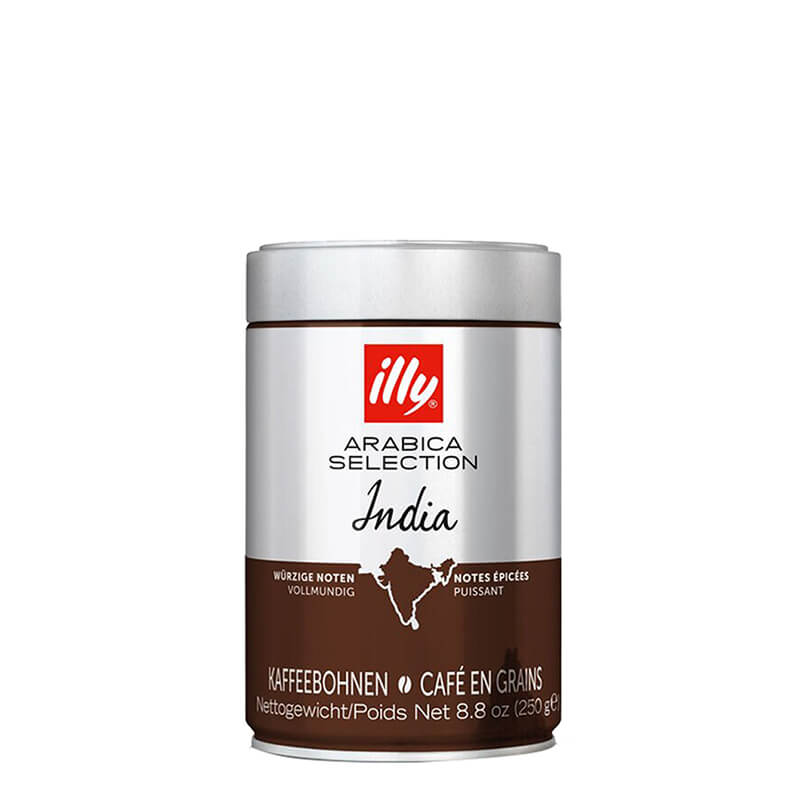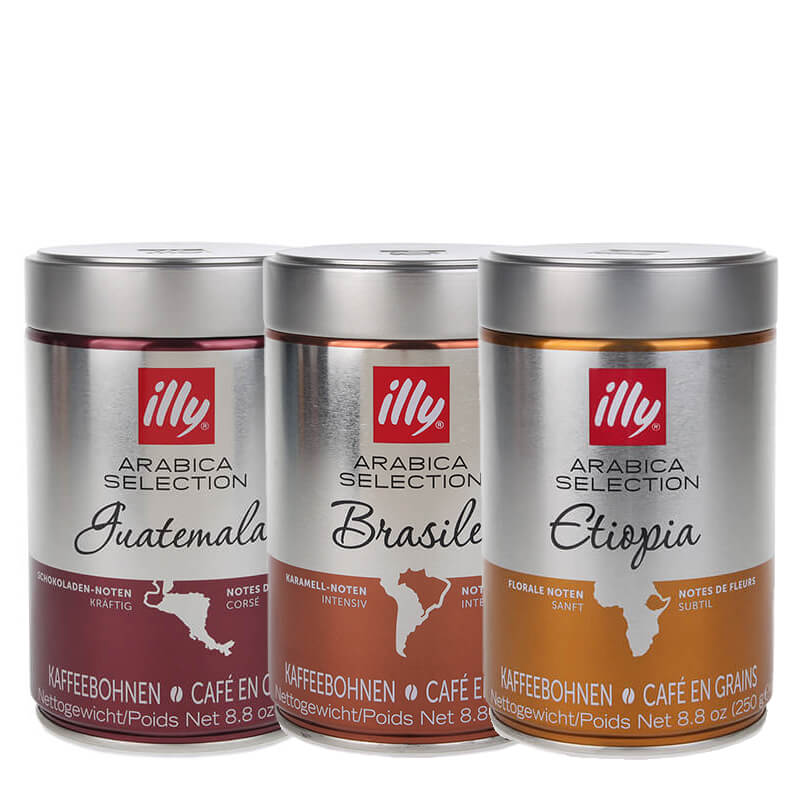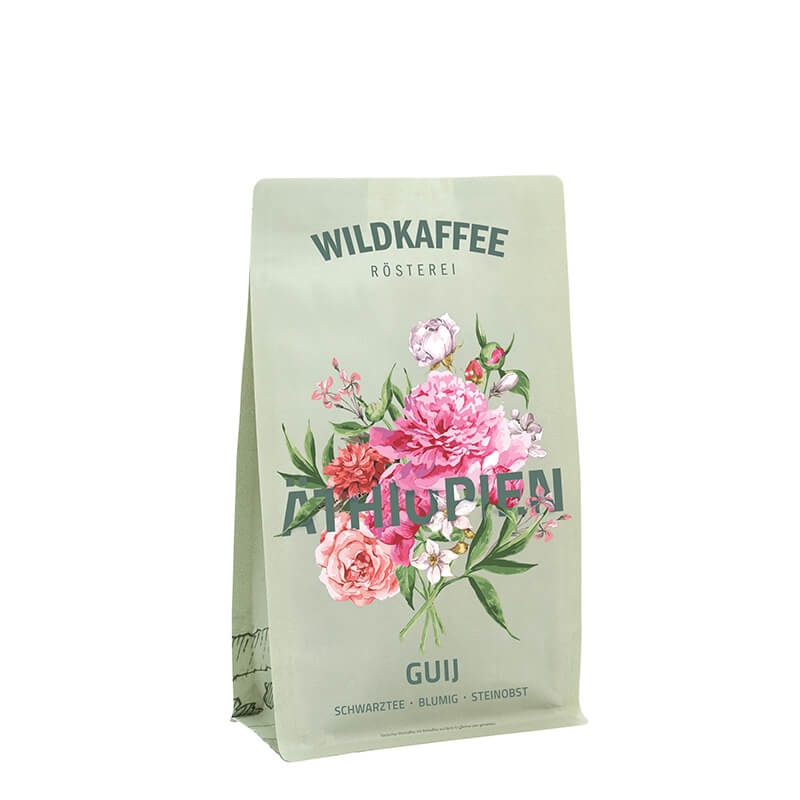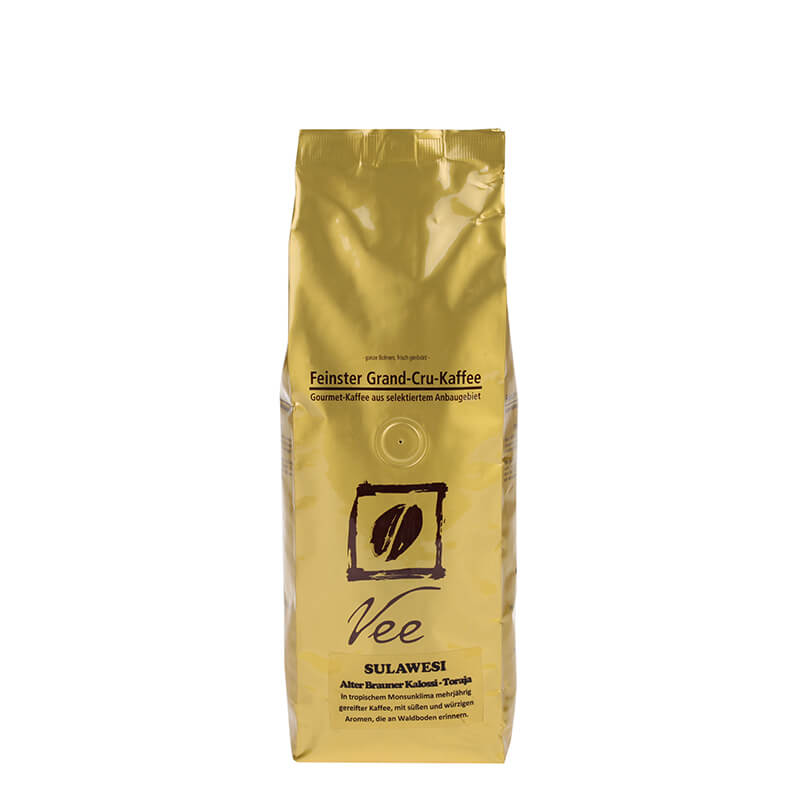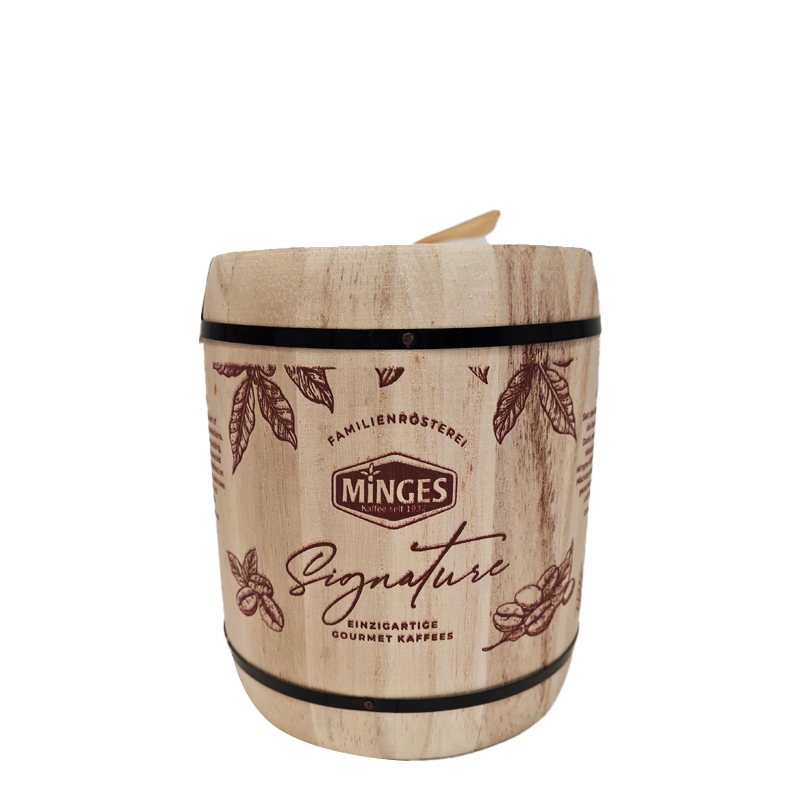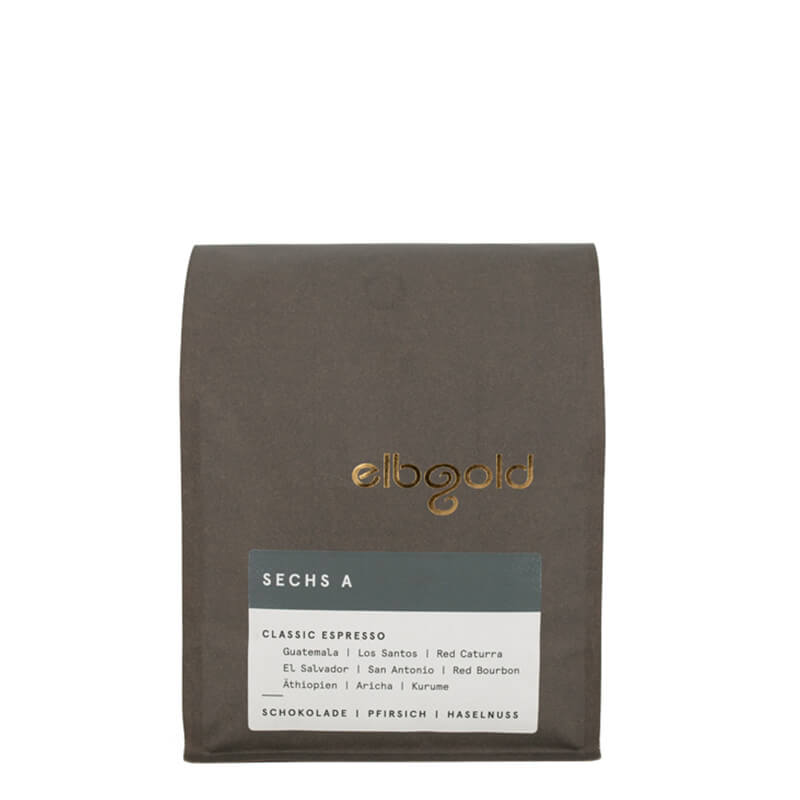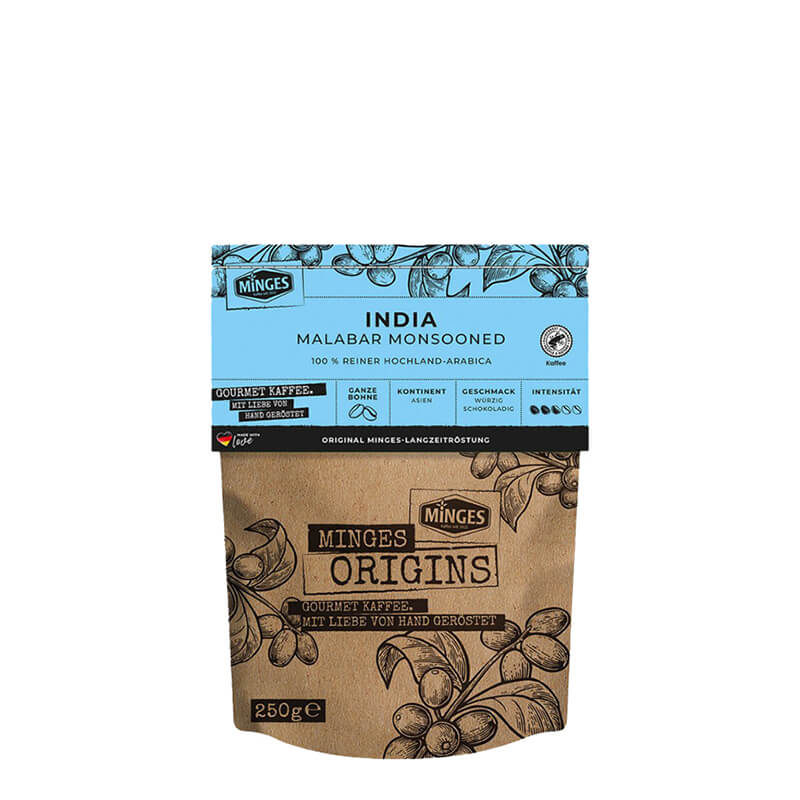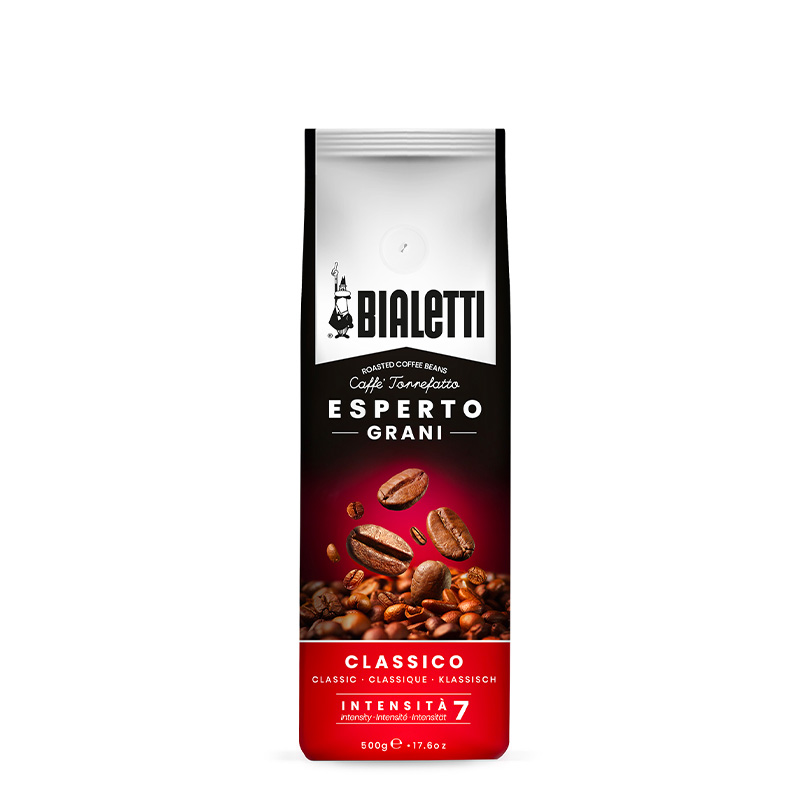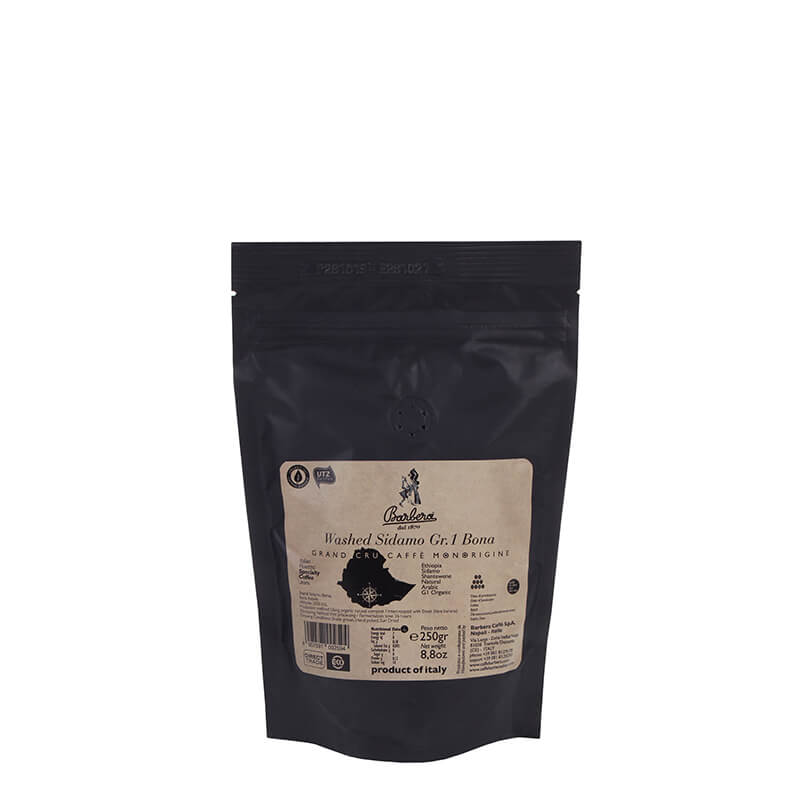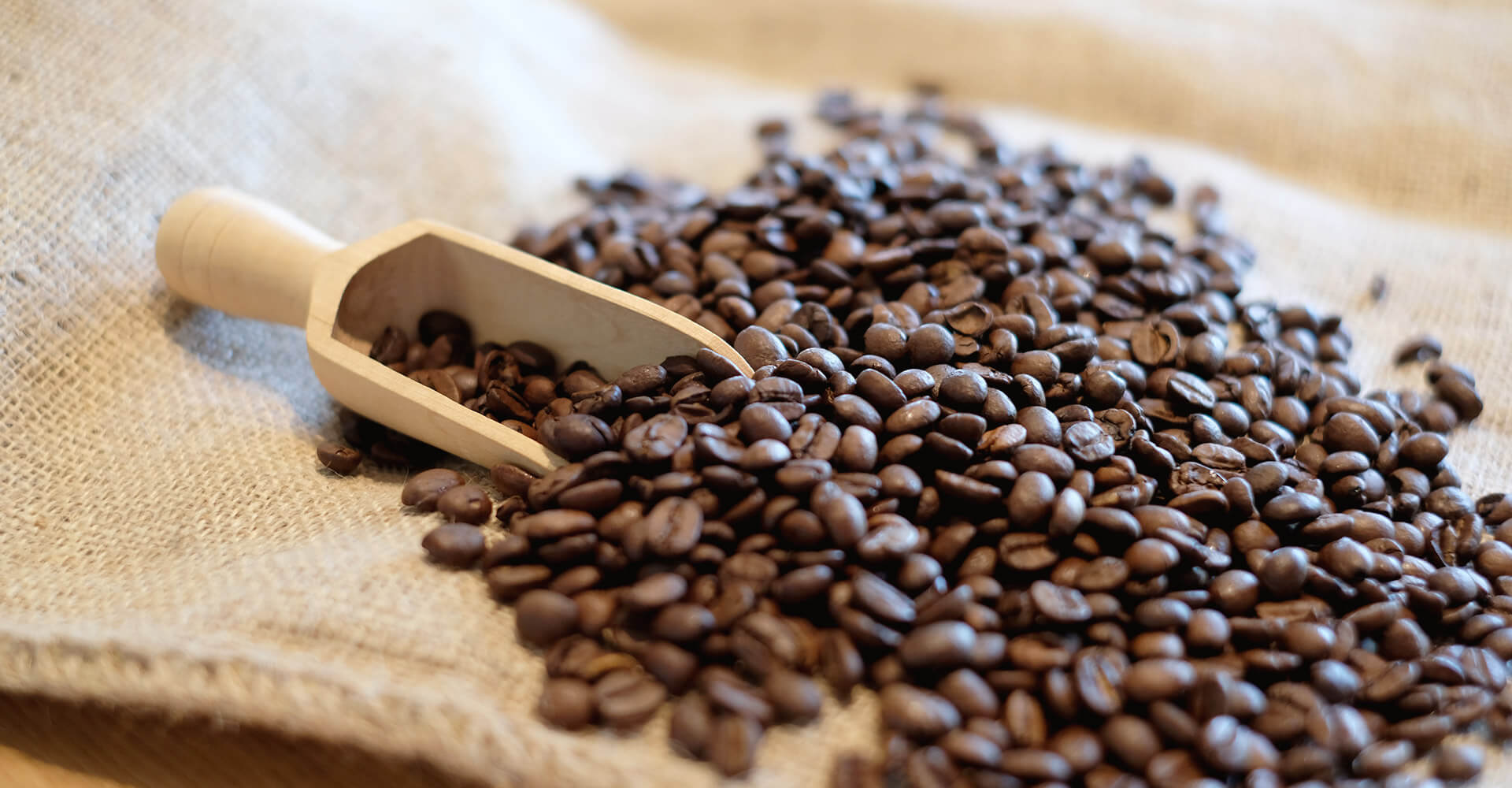

SINGLE ORIGIN - THE SECRET OF DIFFERENT PROVENANCES
EACH GROWING REGION HAS ITS OWN SPECIAL FEATURES
More and more coffees come from only one growing region and are called Single Origin because of their varietal purity. The desire of many Frahling lovers for an exclusive and exceptional taste is fulfilled by Single Origin products. Only the best beans of a harvest are selected for Single Origin coffees. These often come from the cool highland regions, which are accompanied by a slow ripening phase of the coffee cherries. This method of cultivation is often reflected in the price, but is also noticeable in terms of taste. The different countries of origin along the coffee belt are accompanied by different aromas and flavors, which are shaped by the diverse climatic conditions of the respective growing region. Single origin coffees reflect the flavor characteristics of the provenance and are generally roasted to a lesser degree than a blend. The distinctive flavor profile of each country of origin is what makes Single Origin coffees so special. Aromatico offers a wide variety of different Single Origin coffees. In addition to the exclusivity of the Single Origin label, some products are certified organic or Fairtrade. Travel with each sip to the respective provenances of different countries of origin and enjoy your Single Origin coffee.
DISCOVER SINGLE ORIGINS
COFFEE ORIGINS
Central America: Panama
Regions: Renacimiento, Volcan, Boquete
Variety: Typica, Caturra, Catuai and one of the most expensive varieties in the world Geisha
Roasting: Medium roasting Preparation: Sun-dried
Taste: From medium-bodied to sweet, but also has a floral to fruity note in the coffee
Although not directly associated with coffee, Panama produces one of the most expensive coffees in the world. The country is located on the Pacific and Atlantic Oceans. Due to its geographical location, Panama has volcanoes and perfectly suitable harvesting areas for coffee. The weather in Panama is settled at 24-30 °C degrees and due to the climatic conditions often covered with clouds, which leads to light showers. This is a blessing for coffee growers, as it means that trees are not needed to protect the coffee plant because of the sun. The most famous variety is Geisha. It was imported from Costa Rica in the 60's and finds its actual origin in Ethiopia. Geisha from the Hacienda La Esmeralda is the second most expensive coffee in the world. The taste is very soft, floral and is not strong in mouthfeel. It is more like tea and perhaps that is why it is so highly regarded in Japan, the tea drinking culture.
Central America: Nicaragua
Regions: Jinotega, Nuevo Segovia and Matagalpa
Variety: Caturra, Catuai, Hybridis H1 & H3, Marsellesa
Roast: Medium roast
Taste: Soft, acidic, but also caramel and chocolate
Nicaragua grows mostly Arabica (e.g. the Bourbon and Pacamara varieties). The best beans thrive in Jinotega, Nuevo Segovia and Matagalpa. The growing areas are usually located at an altitude of about 1,200 meters. Most of them are small farms, each run by a single family. Large machines as well as fertilizers and insecticides are often too expensive for the farmers. Coffee from Nicaragua is thus mostly an (involuntary) organic product. The UCPCO (Unión Cooperativa Productores de Café Orgánico) also ensures that the coffee is always traded fairly and thus makes a significant contribution to securing the livelihood of the farmers.
Central America: Puerto Rico
Regions: Hacienda de Café Pomarrosa, Sandra Farms Coffee, Hacienda San Pedro, Hacienda Tres Ángeles
Variety: Typica, Catimor, Pacas and Bourbon
Roasting: Medium roast
Preparation: Sun-dried
Taste: Low acidity, mild, spicy, full-bodied
Puerto Rico's coffee production is so low that, in order to meet its own needs, additional coffee is sourced from other countries such as Central America. Even though Puerto Rico's coffee cultivation is very small, the coffee is of high quality. Due to the Caribbean tropical temperatures, the coffee enjoys the best growing conditions. As in other countries, shade trees are used in the plantations with the coffee plant. The coffee has a good body and is characterized by an intense flavor that goes from spicy to chocolaty. Although Puerto Rico has ideal growing conditions, the growth in the coffee business is still very weak. Due to political disputes and environmental disasters, Puerto Rico does not manage to gain a proper foothold.
Central America: Honduras
Regions: El Paraiso, Santa Barbara, Copan, Comayagua, La Paz
Variety: Pacas, Bourbon, Typica and Catuai
Roast: Medium roast
Taste: Soft, acidic, but also caramel and chocolate
Honduras is the largest coffee producer in Central America and the sixth largest in the world. The country has one of the most nutrient-rich soils in Central America. The highland area offers an altitude of 1,000 to 2,000 meters. In accordance with its tropical climate, Honduras also grows high-quality coffee. The tropical weather also brings poor harvests to El Salvador, as the high rainfall does not allow for perfect drying under the sun. The varieties in Central America are very similar, as Honduras borders Nicaragua, Guatemala and El Salvador. The largest growing areas are mainly in the west and center of the country. Honduras is mainly specialized in Arabica, although a small part of the country also grows Robusta.
Central America: Guatemala
Regions: Acatenango, Antigua, Atitlán, Cobán, Frajanes, Huehuetenango, New Oriente and San Marcos
Preparation: Washed, Semi Washed
Variety: Bourbon, Catuai, Caturra, Maragogype
Roast: Gold, light roast
Guatemala is located in the geographic coffee belt and offers the best conditions for good coffee due to tropical warmth and humidity. Parts of the coffee grown in Guatemala are grown in the largest artificial forest in Central America. The plantations of Guatemala are mostly located in the south of the country and are planted together with shade trees. The shade trees on the plantations are especially important because they protect the coffee plants from direct sunlight. The country has 34 active volcanoes, which provide fertile soil and produce different flavors in the coffee due to their different altitudes. The coffee bean in Guatemala is large and has a bluish color. Guatemalan coffee provides one of the best specialty coffees in the world. The higher the coffee is grown, the fuller the body and finer the acidity. The coffee in lower regions is much lighter in the cup.
Central America: El Salvador
Regions: Usulutan, Morazan, San Miguel, La Union, Santa Ana, Sonsonate, Ahuachapan, La Libertad, San Salvador, La Paz, Cuscatlan, San Vincente. Preparation: Washed, Semi Washed
Variety: Arabica Heirloom, Pacamara, Bourbon, Pacas
Roast: Gold, light roast
Taste: Balanced, mild aromatic, fine acidity
Coffee in El Salvador was first sighted in 1740, grown for domestic consumption and is considered the fourth largest source of income in the country. El Salvador is known for its simple, original coffee, but also for high-quality organic coffee. The use of agrochemicals is banned throughout the country. The coffee grows on volcanic soil at an altitude of 1200 to 1500 meters and is therefore considered highland coffee. The taste is determined at high altitudes and has a blue-green bean color. The coffee has a light but noticeable body coupled with a fine acidity and an intense aftertaste that has a hint of chocolate.
Central America: Costa Rica
Preparation: Washed, Pulp Natural, Semi Washed
Regions: Tarrazu, Naranjo, San Ramon, Orosi, San Pedro
Varieties: Marsellesa, H1, H3, Tipica, Caturra, Catuai, Mundo Novo, Costa Rica 95, Hibrido Tico, Geisha, Villalobos, Villa Sarchi, Obatã, Bourbon, Venecia Roasting: Gold, light roasting
Taste: pronounced acidity (not dominant) with a soft finish, very mild and digestible
Coffee from Costa Rica plays a traditional role. As early as 1830, the English brought the coffee plant to the country. With its ideal climate, strict water regulations and environmental protection measures, Costa Rica developed into an important coffee-growing country for top-quality coffee. The Tarrazú variety, which grows in the south of San Jose, is considered one of the best coffees in the world (specialty coffee). Due to the growing altitude of 1200 to 2000 meters and the humid mild temperatures (17 to 25°C degrees) the coffee plant grows slower and forms a spicy aroma. The volcanic soil is also very fertile, which makes Costa Rica an optimal growing area. In general, coffee from Costa Rica is very mild and digestible. A special processing method is the honey processing method. In this process, the pulp is only partially removed from the coffee cherry and laid out in the sun to dry. During this process, the bean absorbs the sweetness of the pulp, giving the coffee a fine sweetness reminiscent of honeydew melon.
South America: Colombia
Regions: Cauca, Santander, Huila, Tolima, Antioquia and Nariño
Variety: Castillo, Colombia, Caturra
Roasting: Medium roasting
Preparation: Sun-dried, drying under glass roof
Taste: Mild, full-bodied, low acidity
The coffee beans from Colombia are appreciated all over the world for their quality. The main coffee growing regions are the departments of Quindío, Caldas and Risaralda, collectively known as "Eje Cafetero", the so-called coffee triangle of Colombia. About 66% of the Coffea bushes are cultivated on modern farms, and harvesting is mostly done by hand. The remaining part of the coffee grows on small, family-run plantations. In total, about 20% of the harvest, mostly defective or low-quality beans, remains in the country itself. The coffee is known for its full body and good balance between sweetness and acidity; connoisseurs even detect slight tropical notes. The best coffee beans come from the coffee region south of Medellín. With almost 800,000 tons, which are traded as a specialty in 70kg bags, Colombia is the world's third largest producer.
South America: Brazil
Regions: Bahia, Rondônia
Variety: Mundo Novo, Catuai, Caturra, Bourbon, Catucai, Acaiá and Obatã Roasting: Medium roasting
Preparation: Sun-dried
Taste: Mild, low acidity, spicy
The South American country of Brazil produces 34% of the world's traded coffee on 2.3 million hectares, making it the clear number one in the world, far ahead of Vietnam. Brazil has around 287,000 farms growing coffee, each ranging in size from one hectare to 25,000 hectares of land. On these cultivated areas, about 45 million bags of coffee beans of 60 kg each are harvested annually, of which about 80% are Arabica and 20% Robusta beans. What is special here is that most of the harvesting is done by machine. A large proportion of the coffee harvest is consumed by the Brazilians themselves, as almost a third remains in the country.
Africa: Ethiopia
Regions: Limmu, Tepi, Lekempti, Djimmah, Bebeka, Sidamo, Yirgacheffee and Harrar
Variety: Arabica only
Roasting: Medium roasting
Preparation: Sun-dried
Taste: Light acidity, floral notes
Ethiopia is the country of origin of coffee. The African country has hardly any modern coffee farms, because here coffee is mainly harvested by small farmers under natural conditions. Most of the washed coffee comes from the highlands south and west of Adis Ababa, and in 2018 the country exported about 6 million bags, making it the fifth largest exporter in the world. Typical Ethiopian coffee is forest coffee from wild coffee trees and garden coffee, whose cherries grow on bushes in the plains rather than on slopes. Because of its wild growth, Ethiopia has a unique diversity of species and varieties. Almost all smallholder farmers grow coffee in the traditional way and do not use pesticides. For this reason, the majority of Ethiopian coffee is organically grown. Ethiopia is also known for its coffee ceremony, called Buna. In this ceremony, which is celebrated up to 3 times a day, the coffee is brewed in a particularly elaborate way over an open fire in 3 steps. The first cup of coffee, called Arbol, is the strongest and fullest in taste. Tona, the second cup, and Bereka, the third cup, are brewed from the coffee grounds already present in the jabana and are therefore weaker in taste.
Africa: Uganda
Regions: Lake Victoria, Rwenzori Mountains
Variety: Cafea Canephora (Robusta) around Masaka, Luwero, Kiboga and Mukono (central region), SL14 Arabica
Roasting: Medium - dark roast Preparation: Sun-dried
Taste: Fruity note, generous spiciness
The country is the second largest Robusta producer in the world. Only 20% of Uganda's coffee plants are Arabica beans. After Ethiopia, Uganda is Africa's second largest coffee exporter as well as the second largest producer of Robusta beans. Robusta grows here at altitudes of 900 to 1,500 meters, while Arabica grows at altitudes of 1,300 to 2,300 meters. Arabica grows in the mountainous areas on the border with Congo (Rwenzori Mountains - Mountains of the Moon) and on the border with Kenya on Mount Elgon, an extinct volcano. The tropical climate is tempered by the country's high altitudes, making it ideal for the cultivation of both species. In addition, high rainfall and the relatively low incidence of pests ensure high-yield coffee production. Thanks to technical innovations in production and processing, the quality of Ugandan products is also steadily increasing.
Africa: Kenya
Regions: Mount Kenya. , Aberdare Zone, Kasii, Nyanza, Bungoma, Nakuru, Kericho
Variety: Blue Mountain, K7, SL34
Roasting: Medium roasting
Preparation: Sun-dried
Taste: Strong acidity, natural sweetness
Kenyan top coffees are especially fragrant in the cups of German connoisseurs. For the extremely fine acidity, excellent fruitiness and full body, they also pay higher prices than for comparable qualities from Colombia or Central America. The first trees came from Ethiopia in the 19th century, but it was not until the beginning of this century that missionaries introduced the valuable Bourbon trees. They are cultivated in 1300 large plantations and by 600,000 small producers in cooperatives. Kenyan coffee grows mostly at an altitude of 1500 to 2100 meters. It is usually harvested twice a year. Since only the ripe coffee cherries are picked, it can sometimes happen that the entire plantation has to be harvested up to seven times. The harvest volume in 2016 was 1.6 million bags.
Asia: Vietnam
Regions: Central and northern Vietnam
Variety: Various Robusta varieties
Roasting: Medium roasting
Preparation: Sun-dried Taste: Nutty, chocolaty, woody
Although Vietnam is far behind Brazil in terms of area, the coastal state has become the second largest producer in a very short time. The first Coffea plants imported to Vietnam were Arabicas. Today, however, almost only Robusta is grown in the Southeast Asian country. More than 95% of the coffee is grown on small farms. Only a small part is cultivated on state-owned coffee plantations. The highlands are 600 meters above sea level and have perfect conditions for coffee cultivation: temperatures are milder than in the rest of the country, and the climate is humid and relatively cool. Therefore, 80% of coffee cultivation is concentrated in this area. The Vietnamese grow at least 95% Robusta coffee, which is exported to more than 60 countries. was. As a rule, only about five percent of the annual harvest remains in Vietnam for its own consumption.
Asia: Indonesia
Regions: On almost all islands, especially volcanic islands
Variety: Various Robusta and some Arabica
Varieties: Bergendal, Garundang, Java
Roasting: Light roasting
Preparation: Sun-dried
Taste: Soft aroma, a full body and an earthy flavor
It was in 1696 during the Dutch colonial period that the Dutch imported Arabica coffee to plant and grow here in the Cibodas National Park on the road to Puncak. This became one of the top commodities of the Netherlands. The VOC (Dutch East India Company) exported the first Indonesian coffee shipment in 1711, which grew to 60 tons per year in just 10 years. In Indonesia, coffee is not only a way of life, it has become an important commodity. Indonesia is one of the world's largest coffee producers, along with heavyweights Brazil, Vietnam and Colombia. Coffee is not only consumed by Indonesians, but has also become a source of livelihood for many people. From coffee farmers to coffee traders, coffee is an essential part of many people's daily lives. Mainly, the country produces Robusta beans, but the share of Arabica beans has now increased to almost 15% as well. Indonesia produces some of the finest gourmet beans in the world, the most well-known but controversial being Kopi Luwak, also known as cat coffee.
Asia: India
Regions: Karnataka, Kerala and Tamil Nadu
Variety: Various Robusta, Arabica: Chickumalgu, Sarchimor
Roasting: Medium roasting
Preparation: Sun-dried, Monsooning
Taste: Little acidity, spicy, aromatic
Due to its historical heritage, coffee from India is mainly grown in the southern Indian provinces of Karnataka, Kerala and Tamil Nadu, although more and more new growing areas are being developed, for example in the mountainous northeast of the country. Different types of coffee are grown at different altitudes. There are an incredible number of coffee plantations in India, but most of them are very small. Just over half of India's coffee is produced in the southern Indian region of Karnataka. Up to 50 different species of trees and plants grow at different heights on Indian coffee plantations. They not only provide shade, but also enrich the soil with nutrients and protect it from soil erosion. Many coffee connoisseurs will be familiar with Monsooned Malabar. 100% Arabica coffee that gets a mild and sweet note from wind and humidity. Monsooning is a special test of coffee beans. This unique coffee bean refinement was discovered on the Malabar coast of India. The warm monsoon rains cleanse and flush the coffee beans, giving them an exceptional flavor. India is the tenth largest coffee producer in the world, with 80% of the beans leaving the country, but coffee consumption is also increasing in India itself.
United States: Hawaii
Regions: Mauna Loa, Hualalai and Mauna Kea or other island: Kauai, Molokai,Oahu
Variety: Caturra,Typica, Kona
Roasting: Medium roasting
Preparation: Sun drying
Taste: Full-bodied, nutty and cinnamony aftertaste.
Hawaii offers one of the best growing conditions in the coffee world. They have volcanic soils that are particularly fertile, tropical climate for the plant to thrive, and regularly cloudy skies that protect the coffee from sunlight. The yield is not very high, yet one of the best coffees in the world is sold here. Kona coffee is grown in the Big Island area and the price per kilo is about 100 euros. The taste of Kona has a delicate aroma coupled with chocolate and cinnamon notes. It has a full-bodied taste that can only be sold under the name "Extra Fancy" or "Number one" as 100% Kona coffee.






